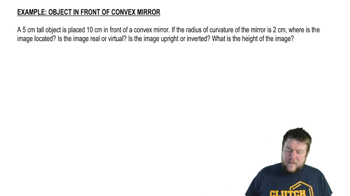A 105-mm-focal-length lens is used to focus an image on the sensor of a camera. The maximum distance allowed between the lens and the sensor plane is 132 mm.
(a) How far in front of the sensor should the lens (assumed thin) be positioned if the object to be photographed is 10.0 m away? (b) 3.0 m away? (c) 1.0 m away?
(d) What is the closest object this lens could photograph sharply?






